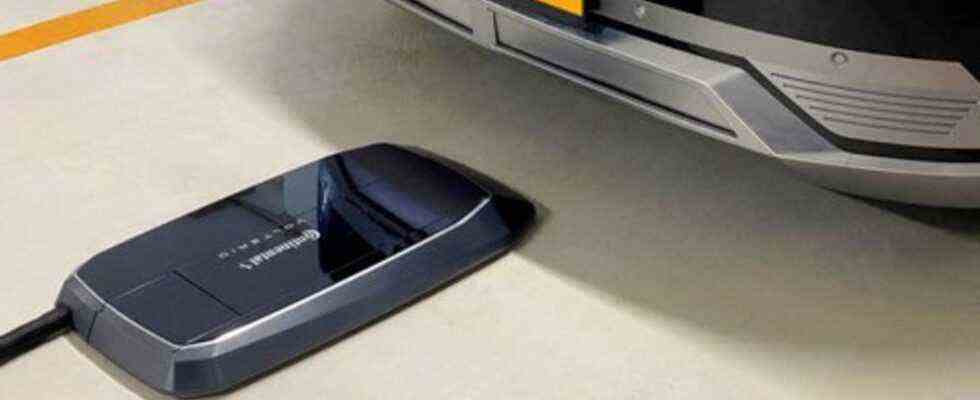Automatic electricity charging
“Robot” for electric cars should prevent charge loss
The loading robot from Continental
© Continental
Filling up with more electricity than is actually available in the form of energy afterwards: This is often a part of electric cars. A charging robot now wants to make charging losses a thing of the past and make “filling up” more practical.
In the case of electric cars, it is not only their range that plays an important role, but also the loss of charge is not insignificant. Because even during charging, part of the electricity stored is lost. Continental Engineering Services (CES), the development and production service provider of the automotive supplier Continental and the start-up Volterio now want a solution: a fully automatic “charging robot”.
The co-developed system consists of two components: a unit on the vehicle’s underbody and a unit placed on the floor. If you park the car in the garage, both components connect automatically. You don’t have to park your vehicle in an exact parking spot, because the charging robot corrects deviations of up to 30 centimeters from the ideal parking position.
“Our charging robot is a real evolutionary step to make electric mobility more convenient and suitable for everyday use,” promises Christoph Falk-Gierlinger, Managing Director of CES. The system should enable “particularly sustainable and resource-saving” charging. In contrast to wireless inductive charging via a magnetic field, “hardly any energy is lost” when using the charging robot. In addition, charging should be more convenient in this way – not only because there is no need to find an exact parking spot when parking, but also because there is no need to connect a power cable to the vehicle.
Charging robots should “belong to everyday automotive life”
Another advantage should lie in the installation of the system. Accordingly, the ground unit only has to be placed on the ground. The developers are certain: “If vehicles drive fully automatically and park independently in multi-storey car parks, automated charging solutions will be part of everyday automotive life.”
A first near-series model of the charging robot is planned for mid-2022, and series production in Germany is planned for 2024. Initially, the system will be available for private households with an energy output of 22 kW alternating current, which corresponds to a powerful wall box. In a second step, the companies want to develop a fast charging system with more than 50 kW direct current, which is to be sunk into the ground and used in public places such as parking garages, petrol stations or on company premises.
Many electric cars with charge loss
What would mean, when filling up a combustion car, that you practically spill a certain amount of fuel, is not unusual for an electric car: When charging with electricity, there is usually a loss of charge, even if this is not the same for every vehicle.
An ADAC test with 15 electric cars showed that the real consumption at the charging station and the information in the on-board computer sometimes differ significantly. Depending on the vehicle, the automobile club determined charging losses of 10 to 25 percent.
The current “Ecotest” of the ADAC finally came to the conclusion that the Tesla Model X100D with a 100 kWh battery requires 108.3 kWh for a full charge. It was 27.2 kWh for the Renault Twingo Electric with a 22 kWh battery and 100.8 kWh for the Jaguar i-Pace with a 90 kWh battery.
Sources: Continental, ADAC, ADAC Ecotest


